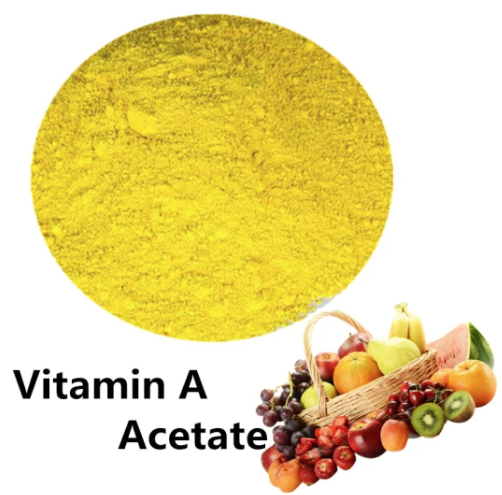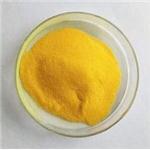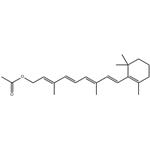Retinyl acetate: a naturally occurring fatty acid ester form of retinol
Aug 28,2024
Introduction
Retinyl acetate (IUPAC name: all-(E)-3,7-dimethyl-9-(2,6,6-trimethyl-1-cyclohex-1-enyl)nona 2,4,6,8-tetraen-1-yl acetate; synonyms: retinol acetate, vitamin A acetate, all-trans vitamin A acetate, all-(E)-retinol acetate) is identified by Chemical Abstracts Service (CAS) number 127-47-9 and European Inventory of Existing Chemical Substances (EINECS) number 204-884-2.

Chemical property
The molecular formula of retinyl acetate is C22H32O2, and its molecular weight is 328.5. It has a melting point of 53–59 ℃ (pure), a density of 0.91–0.92 g/cm3 (20 °C, stabilised) and an octanol/water partition coefficient of 7.3 (pure). It is insoluble in water and glycerol and soluble in organic solvents such as anhydrous ethanol (25 mg/mL), methanol, chloroform and ethers, fats and oils. Retinyl acetate appears as yellowish crystals or crystalline powder. By specification, the active substance has a minimum vitamin A activity of 2.76 × 106 IU/g.
Biological activity
Retinyl Acetate is a naturally occurring fatty acid ester form of retinol (vitamin A) with potential antineoplastic and chemopreventive activities. Retinyl acetate binds to and activates retinoid receptors, inducing cell differentiation and decreasing cell proliferation. This agent also inhibits carcinogen-induced neoplastic transformation in some cancer cell types and exhibits immunomodulatory properties.
Vitamin A and retinyl acetate
Vitamin A is available in dietary supplements, usually in retinyl acetate or retinyl palmitate (preformed vitamin A), beta-carotene (provitamin A), or a combination of preformed and provitamin A. Most multivitamin/mineral supplements contain vitamin A. Dietary supplements that contain only vitamin A are also available. Human studies often feed vitamin A in retinyl acetate or retinyl palmitate, the two most common forms of vitamin A also used to supplement dairy and fortified cereals.
References
[1] on Additives, EFSA Panel and Products or Substances used in Animal Feed (FEEDAP). “Scientific Opinion on the safety and efficacy of vitamin A (retinyl acetate, retinyl palmitate and retinyl propionate) as a feed additive for all animal species and categories.” EFSA Journal 11 1 (2013).
- Related articles
- Related Qustion
- Retinyl acetate: Introduction; Application and More Dec 25, 2023
Retinyl acetate is derived from retinol. It can be used as a dietary supplement as a source of vitamin A.
Poziotinib is a pan-human epidermal growth factor receptor (HER) inhibitor that irreversibly blocks the signaling pathways of EGFR, HER2, and HER4, exerting an anti-tumor effect.....
Nov 6,2024Biochemical EngineeringCoumarin can be used as a spice and in medicine as a flavouring agent. The coumarin derivative warfarin is used to kill rodents, and this drug has anticoagulant functions.....
Aug 28,2024Plant extractsRetinyl acetate
127-47-9You may like
- Retinyl acetate
-

- $99.00 / 1kg
- 2024-11-06
- CAS:127-47-9
- Min. Order: 1kg
- Purity: 99%
- Supply Ability: 5000 ton
- ALL-TRANS-RETINYL ACETATE
-

- $6.00 / 1kg
- 2024-11-06
- CAS:127-47-9
- Min. Order: 1kg
- Purity: More than 99%
- Supply Ability: 2000KG/Month
- Retinyl acetate
-

- $0.00 / 1kg
- 2024-11-06
- CAS:127-47-9
- Min. Order: 0.10000000149011612kg
- Purity: ≥99%
- Supply Ability: 20tons






